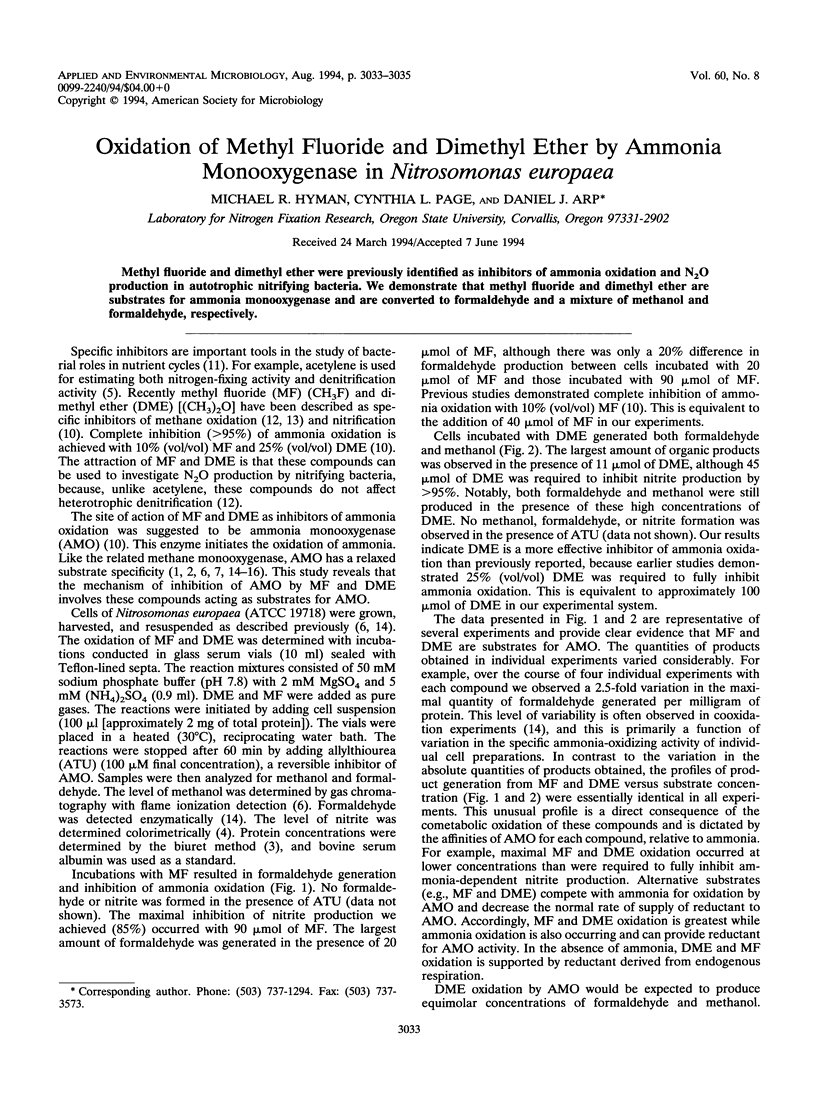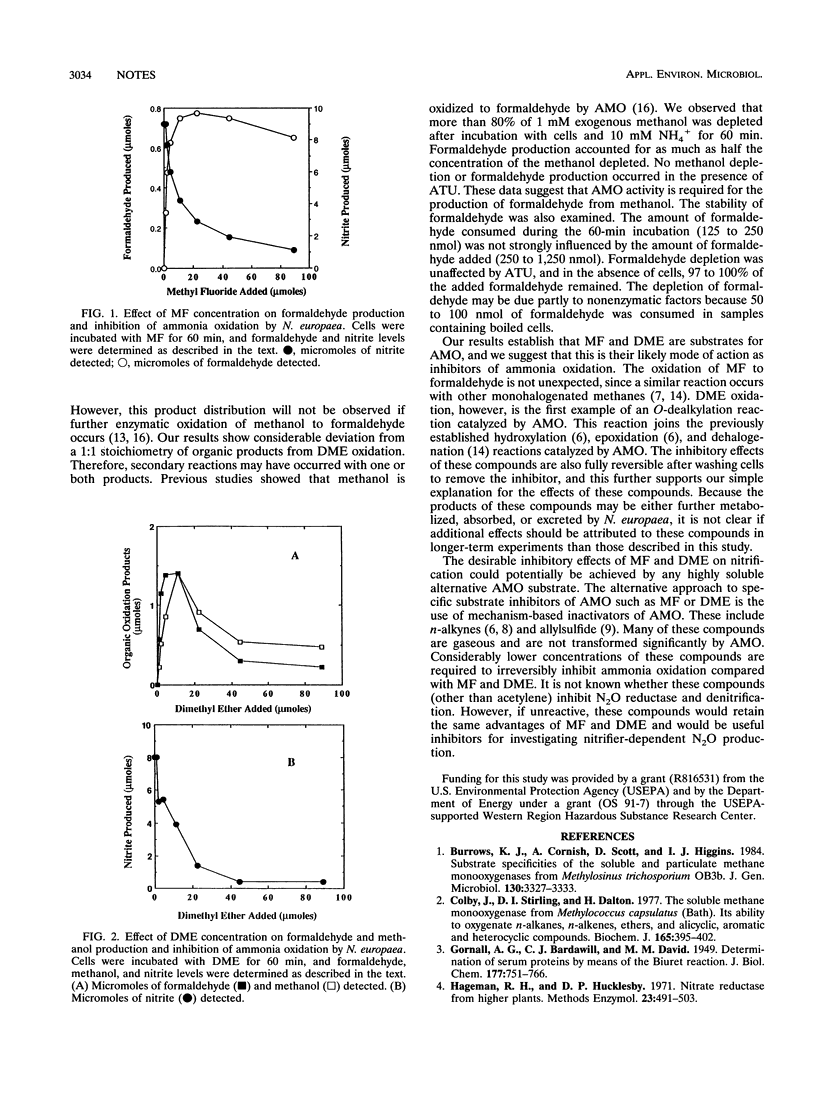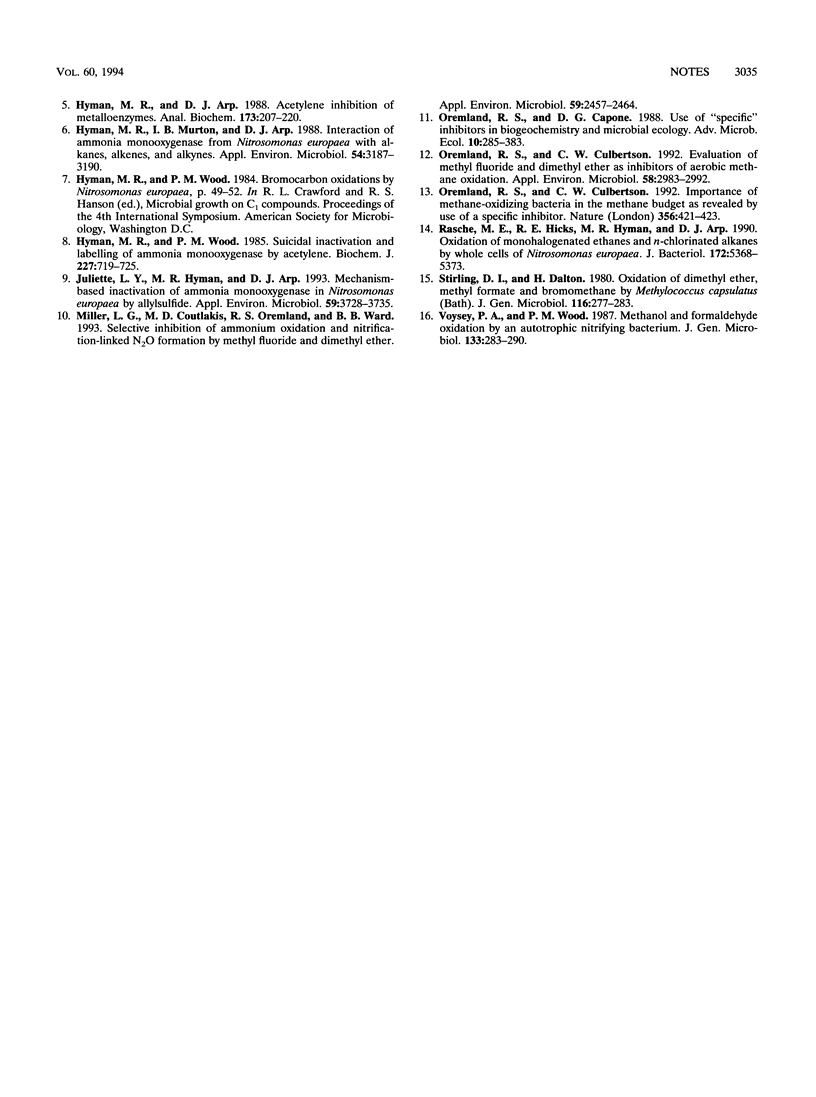Abstract
Methyl fluoride and dimethyl ether were previously identified as inhibitors of ammonia oxidation and N2O production in autotrophic nitrifying bacteria. We demonstrate that methyl fluoride and dimethyl ether are substrates for ammonia monooxygenase and are converted to formaldehyde and a mixture of methanol and formaldehyde, respectively.
Full text
PDF


Selected References
These references are in PubMed. This may not be the complete list of references from this article.
- Colby J., Stirling D. I., Dalton H. The soluble methane mono-oxygenase of Methylococcus capsulatus (Bath). Its ability to oxygenate n-alkanes, n-alkenes, ethers, and alicyclic, aromatic and heterocyclic compounds. Biochem J. 1977 Aug 1;165(2):395–402. doi: 10.1042/bj1650395. [DOI] [PMC free article] [PubMed] [Google Scholar]
- Hyman M. R., Arp D. J. Acetylene inhibition of metalloenzymes. Anal Biochem. 1988 Sep;173(2):207–220. doi: 10.1016/0003-2697(88)90181-9. [DOI] [PubMed] [Google Scholar]
- Hyman M. R., Murton I. B., Arp D. J. Interaction of Ammonia Monooxygenase from Nitrosomonas europaea with Alkanes, Alkenes, and Alkynes. Appl Environ Microbiol. 1988 Dec;54(12):3187–3190. doi: 10.1128/aem.54.12.3187-3190.1988. [DOI] [PMC free article] [PubMed] [Google Scholar]
- Hyman M. R., Wood P. M. Suicidal inactivation and labelling of ammonia mono-oxygenase by acetylene. Biochem J. 1985 May 1;227(3):719–725. doi: 10.1042/bj2270719. [DOI] [PMC free article] [PubMed] [Google Scholar]
- Juliette L. Y., Hyman M. R., Arp D. J. Mechanism-Based Inactivation of Ammonia Monooxygenase in Nitrosomonas europaea by Allylsulfide. Appl Environ Microbiol. 1993 Nov;59(11):3728–3735. doi: 10.1128/aem.59.11.3728-3735.1993. [DOI] [PMC free article] [PubMed] [Google Scholar]
- Miller L. G., Coutlakis M. D., Oremland R. S., Ward B. B. Selective inhibition of ammonium oxidation and nitrification-linked n(2)o formation by methyl fluoride and dimethyl ether. Appl Environ Microbiol. 1993 Aug;59(8):2457–2464. doi: 10.1128/aem.59.8.2457-2464.1993. [DOI] [PMC free article] [PubMed] [Google Scholar]
- Oremland R. S., Culbertson C. W. Evaluation of methyl fluoride and dimethyl ether as inhibitors of aerobic methane oxidation. Appl Environ Microbiol. 1992 Sep;58(9):2983–2992. doi: 10.1128/aem.58.9.2983-2992.1992. [DOI] [PMC free article] [PubMed] [Google Scholar]
- Rasche M. E., Hicks R. E., Hyman M. R., Arp D. J. Oxidation of monohalogenated ethanes and n-chlorinated alkanes by whole cells of Nitrosomonas europaea. J Bacteriol. 1990 Sep;172(9):5368–5373. doi: 10.1128/jb.172.9.5368-5373.1990. [DOI] [PMC free article] [PubMed] [Google Scholar]


